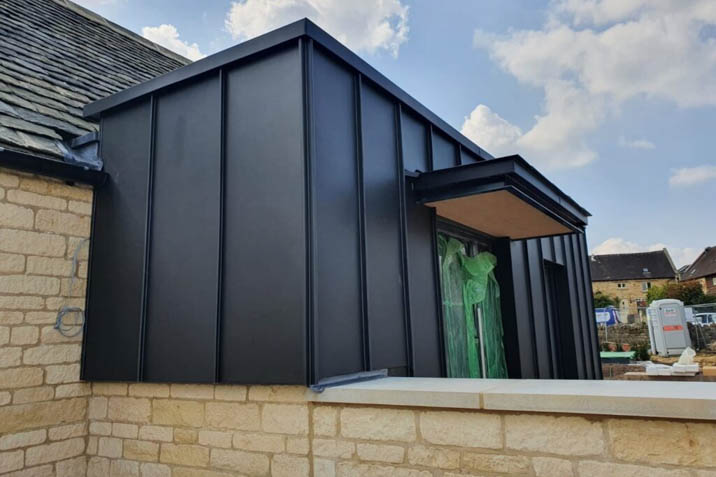What Makes Metal Wall Cladding a Safe Choice for Modern Construction?

When it comes to building materials, metal wall cladding stands out for its durability, aesthetic versatility, and sustainability. However, an equally important yet often understated aspect of metal cladding is its safety profile.
This encompasses fire resistance, load-bearing capacity, and weather resilience—each of which plays a crucial role in the overall safety and longevity of buildings. In this comprehensive exploration, we delve into these safety aspects, underscoring why metal wall cladding is not just a visually appealing choice but a safe one, too.
Safety Features of Metal Wall Cladding to Install Them With Confidence
-
Fire Resistance
Fire safety is paramount in building design, and metal cladding offers significant advantages due to its non-combustible nature. Metals such as steel, aluminium, and copper do not ignite or contribute to the spread of fire, providing a layer of protection that many alternative materials cannot.
Furthermore, specific metal wall cladding systems are designed with fire stops and barriers that enhance their fire-resistant capabilities. This is particularly crucial in high-rise buildings, where the spread of fire can be rapid and devastating.
The choice of insulation material used with the cladding also plays a critical role in fire safety. Non-combustible insulation materials, when used in conjunction with metal cladding, can significantly reduce the risk of fire spread, ensuring that the cladding system contributes positively to the building’s overall fire strategy.
-
Load-Bearing Capacity
While metal cladding is primarily seen as a non-structural element, its contribution to the structural integrity of a building is noteworthy. Metal cladding systems are engineered to withstand their own weight and the dynamic forces that buildings are subjected to, including wind loads and seismic activity.
The strength-to-weight ratio of metals like aluminium and steel is particularly beneficial, allowing for metal cladding in Melbourne to be lightweight and capable of supporting significant loads.
This load-bearing capacity is integral to the safety and durability of the cladding system, ensuring that it remains secure and intact over time, even in the face of harsh environmental conditions.
-
Weather Resilience
The ability of metal wall cladding to withstand a wide range of weather conditions is another critical safety consideration. Metal cladding offers excellent resistance to wind, rain, snow, and UV radiation, protecting the building envelope from water ingress and resulting issues such as mould, mildew, and structural deterioration.
The corrosion resistance of metal cladding, achieved through coatings and treatments such as galvanisation, ensures that it maintains its structural integrity and aesthetic appeal over time.
Moreover, metal cladding in Melbourne can be designed with specific profiles and systems that enhance its weather resilience, such as interlocking panels that provide superior wind resistance and drainage channels that direct water away from the building.
-
Safety by Design
The safety benefits of metal wall cladding are not automatic; they result from careful design, material selection, and installation practices. For instance, the choice of metal, the type of coating, the design of the cladding system, and the quality of installation all influence the fire resistance, load-bearing capacity, and weather resilience of the cladding.
Compliance with building codes and standards is essential to ensure the metal cladding system meets the required safety benchmarks. Regular maintenance and inspection of metal cladding in Melbourne are also crucial to maintaining the safety and performance of metal cladding over time.
-
A Sustainable Safety Choice
Beyond its immediate safety benefits, metal wall cladding contributes to the sustainability of buildings. Its durability and low maintenance requirements reduce the need for frequent replacements and repairs, minimising waste and resource consumption over the building’s lifecycle.
The recyclability of metal cladding further enhances its environmental profile, allowing the material to be reused and repurposed at the end of its service life.
-
Energy Efficiency
Metal wall cladding can significantly improve a building’s energy efficiency. Many metal cladding systems are designed to include thermal breaks and insulation that reduce heat transfer, helping to maintain consistent indoor temperatures and reduce the reliance on heating and cooling systems. This not only contributes to a building’s comfort and sustainability but also leads to substantial savings on energy bills.
-
Role of Technologies in Safety
In the realm of construction, the evolution of metal cladding technologies has been pivotal in enhancing building safety. Innovations in metal cladding materials and installation techniques are setting new standards for safety, combining durability with cutting-edge protective features. Among these advancements, fire-retardant coatings are a game-changer.
Applied to metal surfaces, these coatings significantly slow the spread of fire, providing critical extra minutes for evacuation and response efforts. The development of advanced insulation materials is another leap forward. These materials not only bolster fire resistance but also contribute to the thermal efficiency of buildings, a dual benefit that underscores the holistic approach to modern cladding solutions.
Furthermore, the industry has introduced new cladding systems engineered to withstand extreme weather conditions. From high-velocity hurricane zones to areas prone to heavy snowfall, these systems are designed to protect buildings against the forces of nature. They incorporate enhanced fastening systems, weather-tight seals, and impact-resistant panels, ensuring the building envelope remains secure and intact.
Final Words
Metal wall cladding is a compelling choice for modern buildings for its aesthetic versatility and sustainability and its comprehensive safety profile. Through its fire resistance, load-bearing capacity, and weather resilience, metal cladding contributes to the safety and longevity of buildings.
However, realising these benefits requires a commitment to quality in every aspect of the cladding system, from design and material selection to installation and maintenance. By prioritising safety in using metal wall cladding, builders and architects can ensure that their projects are visually stunning but also secure and durable, standing the test of time against both environmental challenges and safety concerns.
Contact Cladd Co. today!





